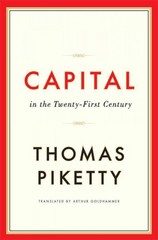Question
Consider the market for women=s sweaters manufactured in China and sold in the United States. The market is initially in equilibrium at a price of
Consider the market for women=s sweaters manufactured in China and sold in the United States. The market is initially in equilibrium at a price of $75 per sweater and 1,000 sweaters sold per month. Then a tax (a tariff) is imposed on each sweater imported from China. The tax is paid to the U.S. government by the importer, which is the U.S. seller of the sweater. Although in reality the tax is expressed as a percentage of the sweater=s price, to make this question easier to answer we will assume the tax is a flat dollar amount of $25
(a)Using the axes at the right, show the effect of the tax on the equilibrium price and quantity sold.
Assume the tick marks for the vertical axis are at $25 intervals, and the tick marks for the horizontal axis are at intervals of 250 sweaters per month.
(b)Based on your graph, who bears the greater burden of the tax: the U.S. buyer or the U.S. seller? In general, under what conditions would the buyer bear a larger burden of the tax than the seller?
(c)On the axes at the right, using colored pencils or pens if you would please, sketch again the effect of the tax and this time show the pre-tax amounts of consumer and producer surplus, the post-tax amounts of consumer and producer surplus, the tax collected by the government, and the amount of deadweight loss. In the area below, provide the legend (what color or striping or other indicates which concept).
(d)Some people who supported the imposition of tariffs on imports from China argued that the tariffs would make Chinese imports more expensive and thereby increase demand for U.S. manufacturing. In fact, the tariffs on Chinese imports seem to be benefitting manufacturing in Thailand, India, Cambodia and other Asian and south Asian economies. Identify one condition under which the tariff on Chinese imports would benefit US manufacturing, but which in fact is not true
Suppose that we have the following price data
Year
Price of Gasoline
Price of Soda
1987
$.89 per gallon
$.35 per 16 oz. bottle
2005
$ 2.39 per gallon
$1.49 per 16 oz. bottle
a)Calculate the percentage change in the price of each good.
b)Calculate the percentage change in the relative price of gasoline in terms of soda.
Year
Relative Price of Gasoline
1987
$.89 / .35 = 2.54
2005
$ 2.39 /1.49 = 1.60
Why do we only worry about relative prices in economics?
1)Suppose you are thinking about starting a lawn service in your area. The lawn service market can be considered perfectly competitive. You own a $200 lawnmower. You have a fixed cost of $90 (maintenance costs on the mower, etc.). Your variable costs are as follows:
# of Lawns Mowed
Total Variable Costs
Fixed Cost
1
$5
90
2
$15
90
3
$30
90
4
$50
90
5
$75
90
6
$105
90
7
$140
90
8
$180
90
9
$225
90
10
$275
90
a)Calculate Total Costs, Average Total Costs, Average Total Costs, Average Variable Costs, and Marginal Costs.
b)Suppose that the going rate for lawns is $35 per lawn. How many lawns would you mow?
c)Calculate your producer surplus, and your profit. Are you earning economic profit?
# of
Lawns Mowed
Marginal Cost
Price
Producer Surplus
1
5
35
30
2
10
35
25
3
15
35
20
4
20
35
15
5
25
35
10
6
30
35
5
7
35
35
0
8
40
35
--
9
45
35
--
10
50
35
--
Total
105
d) How would your production decision change if the price fell to $20 per lawn?
Step by Step Solution
There are 3 Steps involved in it
Step: 1

Get Instant Access to Expert-Tailored Solutions
See step-by-step solutions with expert insights and AI powered tools for academic success
Step: 2

Step: 3

Ace Your Homework with AI
Get the answers you need in no time with our AI-driven, step-by-step assistance
Get Started


